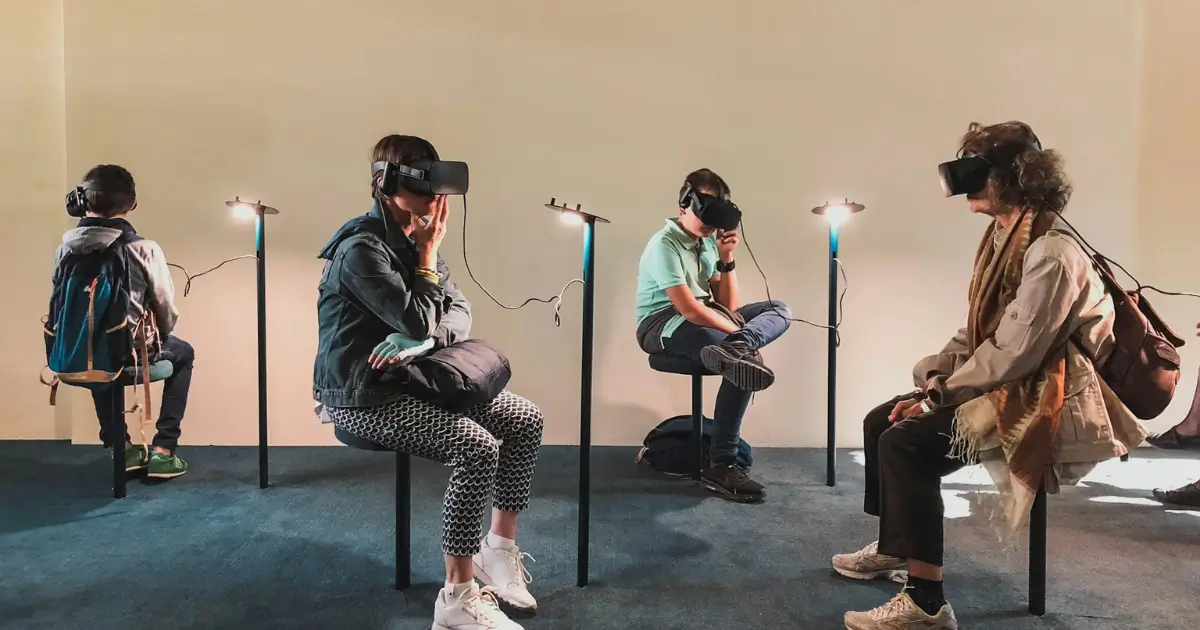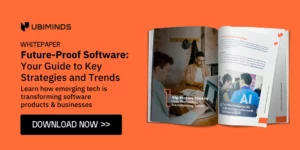Crafting successful Augmented Reality (AR) and Virtual Reality (VR) applications requires more than just technical expertise. User-centered design (UCD) methodologies are crucial for ensuring your AR/VR concepts translate into user experiences (UX) that are intuitive, engaging, and meet user needs. This blog post explores how UCD can be applied throughout the AR/VR development process, from rapid AR/VR prototyping for early user feedback to AR/VR usability testing and feedback sessions. By prioritizing user needs through UCD, you can develop immersive experiences (IXD) that users will love.
Here, we dig into how UCD methodologies can be applied throughout the AR/VR development process, from prototyping and usability testing to feedback sessions. By prioritizing user needs and incorporating their insights, technical teams (product, design, and engineering) can create AR/VR applications that are not only technically sound but also intuitive, engaging, and ultimately, user-centric.
[ez-toc]Understanding User-Centered Design Methodologies in AR/VR
For software teams, crafting AR/VR applications that truly resonate with users requires more than just technical prowess. User-centered design (UCD) methodologies are the key to ensuring your innovative AR/VR concepts translate into successful products with high user engagement.
AR/VR User Experience (UX) Design
A critical component of AR/VR user experience (UX) design is understanding how users interact with immersive environments. This involves conducting thorough research to gather insights into user behaviors and preferences, which inform the design decisions. Key elements include intuitive navigation, responsive interactions, and a seamless integration of the virtual and physical worlds.
Prototyping in AR/VR
Effective AR/VR prototyping allows designers to visualize and test their ideas early in the development process. By creating detailed prototypes, designers can experiment with different scenarios, interactions, and user interfaces. Prototyping helps identify potential issues and gather user feedback, ensuring that the final product meets user expectations.
Usability Testing for AR/VR Experiences
Conducting AR/VR usability testing is vital for refining immersive experiences. This involves observing users as they interact with AR/VR prototypes and identifying areas where they struggle or encounter confusion. Usability testing provides valuable insights that can be used to improve the user interface, enhance user satisfaction, and ensure a smooth and engaging experience.
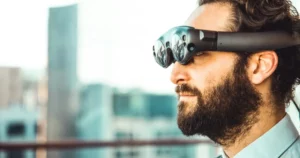
AR and VR are prompting software companies to rethink application design. Photo by My name is Yanick.
Designing Immersive Experiences
Immersive experience design in AR/VR goes beyond visual aesthetics; it encompasses the creation of engaging and interactive environments that captivate users. Designers must consider elements such as spatial audio, haptic feedback, and environmental storytelling to create a holistic and immersive experience. The goal is to transport users to a different reality, making the virtual experience as realistic and engaging as possible.
Key Strategies for User-Centered Design in AR/VR
- Empathize with Users: Conduct user research to understand their needs, preferences, and pain points. Use this information to guide design decisions.
- Iterative Prototyping: Develop multiple iterations of prototypes, incorporating user feedback at each stage to refine and improve the design.
- User Testing and Feedback: Regularly conduct usability testing sessions to gather insights on how users interact with the AR/VR experiences. Use this feedback to make necessary adjustments.
- Focus on Accessibility: Ensure that AR/VR experiences are accessible to a diverse range of users, including those with disabilities. This involves designing intuitive controls and providing options for different interaction methods.
- Prioritize Seamless Interactions: Design interactions that are natural and intuitive, reducing the learning curve for users and enhancing the overall experience.
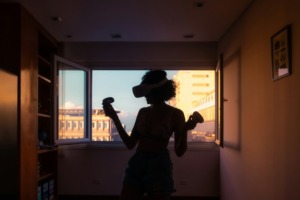
Do you know the idiom “Done is better than perfect – because perfect never gets done.”? Rapid prototyping in AR/VR gets the product incrementally into shape.
Rapid Prototyping for Early User Feedback
Unlike traditional software development, AR/VR thrives on rapid prototyping cycles. UCD methodologies encourage the creation of low-fidelity prototypes early and often. These prototypes can range from simple sketches and paper mockups to basic 3D environments. The goal is to get something tangible in front of users as soon as possible to gather initial feedback and validate core functionalities.
This iterative approach using UCD allows technical teams to:
Does the user understand how to navigate the VR environment and interact with virtual objects? Are the chosen interaction methods intuitive and natural for the AR/VR UX design?
- Tip 1: Focus on core functionalities first. Don’t get bogged down in high-fidelity graphics at this stage.
- Tip 2: Utilize familiar metaphors. Leverage existing user knowledge of everyday interactions to make VR interactions intuitive.
- Tip 3: Allow for multiple interaction methods. Cater to different user preferences by offering alternative ways to navigate and interact within the VR environment.
Are there any awkward control schemes or confusing UI elements that hinder user experience?
- Tip 1: Conduct guerilla usability testing. Get quick feedback from colleagues or readily available users to identify obvious usability issues early on.
- Tip 2: Focus on natural user interfaces (NUI). Make interactions feel intuitive and effortless, mimicking real-world movements whenever possible.
- Tip 3: Prioritize clear visual cues and feedback. Ensure users understand the outcome of their actions within the AR/VR environment.
Is the AR/VR application engaging and intuitive for the target user? Does it spark excitement and a desire to explore further?
- Tip 1: Ask open-ended questions. Encourage users to elaborate on their thoughts and feelings about the AR/VR experience.
- Tip 2: Observe user behavior. Pay attention to how users interact with the prototype and identify any areas of confusion or frustration.
- Tip 3: Look for emotional responses. Gauge user engagement by observing their body language and facial expressions.
By prioritizing user feedback at this early stage, technical teams can refine the core user experience before investing significant resources into high-fidelity development. This ensures the final product is built upon a solid foundation that users will find intuitive and enjoyable.
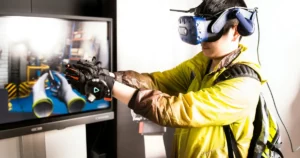
VR user interaction focuses on creating a sense of presence within the virtual world. Photo by XR Expo.
Usability Testing: Unveiling Hidden Barriers to User Experience
Usability testing is a cornerstone of UCD in AR/VR development. During these tests, users interact with the prototype while their actions and reactions are observed and documented by the technical team. This allows for the identification of:
Are users getting lost or disoriented within the VR environment? Is the navigation system clear and intuitive for the AR/VR UX design?
- Tip 1: Create a clear and consistent navigation system. Leverage user experience best practices for wayfinding and menu design.
- Tip 2: Offer multiple navigation options. Provide users with different ways to get around the VR environment, catering to different preferences (e.g., teleportation, virtual joysticks).
- Tip 3: Incorporate visual and auditory cues for orientation. Use landmarks, mini-maps, or directional sounds to help users maintain a sense of direction within the VR space.
Do users understand how to interact with virtual objects and information? Are there any confusing gestures or interaction methods?
- Tip 1: Maintain consistency in interaction methods. Once established, avoid introducing new interaction mechanics that could confuse users.
- Tip 2: Provide clear visual feedback for user actions. Use appropriate animations, sounds, or haptic feedback to acknowledge user input.
- Tip 3: Offer clear and concise instructions within the AR/VR environment. Utilize text overlays, tooltips, or in-app tutorials to guide users through complex interactions.
Is there any risk of nausea or discomfort during use? Can users with different abilities comfortably interact with the AR/VR application?
- Tip 1: Prioritize smooth frame rates and low latency. Minimize technical glitches that can contribute to nausea and dizziness.
- Tip 2: Offer adjustable settings for field of view and comfort. Empower users to personalize their experience and reduce potential discomfort.
- Tip 3: Consider accessibility features for users with disabilities. Integrate features like voice control, text-to-speech, and closed captions to ensure inclusivity.
Observe user behavior and ask for feedback during usability testing to uncover hidden usability barriers that traditional development methodologies might miss. Addressing these concerns early on ensures a more comfortable and accessible user experience for everyone.
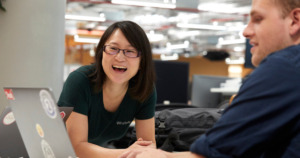
Exceptional UX/UI Designers have a deep understanding of user behavior, needs, and pain points, and they apply this understanding to create user-centric designs.
Feedback Sessions: Refining the Experience Through User Insights
Following usability testing, conducting feedback sessions allows users to provide more in-depth insights into their experience with the AR/VR prototype. Here, technical teams can encourage open dialogue to explore:
Did users find the AR/VR application enjoyable and engaging? Did it meet their expectations?
- Tip 1: Ask users to compare the AR/VR experience to similar products or activities. This can provide valuable insights into areas for improvement and differentiation.
- Tip 2: Encourage users to suggest additional features or functionalities. While you may not implement every suggestion, user ideas can spark valuable innovation.
What elements of the experience could be enhanced? Are there any features users found lacking or confusing?
- Tip 1: Focus on recurring themes in user feedback. Prioritize addressing issues that a significant portion of users encountered.
- Tip 2: Consider the feasibility and impact of suggested improvements. Weigh the effort required against the potential benefit to the user experience.
Which functionalities are most important to users? What features would add the most value to their experience?
- Tip 1: Use a feature prioritization matrix. This tool allows you to weigh the importance and effort required for each feature, helping to guide development decisions.
- Tip 2: Align feature prioritization with your overall product vision. Ensure that the chosen features contribute to the core goals and value proposition of your AR/VR application.
Take user feedback from these sessions into account to prioritize features, refine the user interface (UI), and ensure the final AR/VR application delivers a truly user-centric experience. This iterative process guides technical staff toward a final product that truly caters to the needs and desires of the target audience.
To Sum It Up: The User is the Key to AR/VR Success
UCD methodologies empower technical teams to move beyond the technical aspects of AR/VR development. By prioritizing user needs throughout the development process, teams can create AR/VR applications that are intuitive, engaging, and ultimately, successful. Remember, in the immersive world of AR/VR, the user is the key to unlocking the true potential of your application. Embrace UCD and put the user at the center of your development journey.
Ready to craft an AR/VR experience that users will love? Ubiminds can help! Our team of recruitment specialists is well-versed in the latest AR/VR technologies and can connect you with the top talent you need to bring your vision to life. From product managers and UI/UX designers to seasoned AR/VR developers, we’ll help you assemble the perfect team to build an AR/VR application that is not only technically sound but also user-centric and engaging.
Contact Ubiminds today and let’s discuss how we can help you find the perfect talent to propel your AR/VR project forward!

International Marketing Leader, specialized in tech. Proud to have built marketing and business generation structures for some of the fastest-growing SaaS companies on both sides of the Atlantic (UK, DACH, Iberia, LatAm, and NorthAm). Big fan of motherhood, world music, marketing, and backpacking. A little bit nerdy too!
